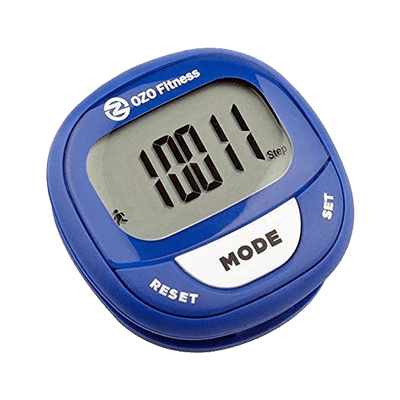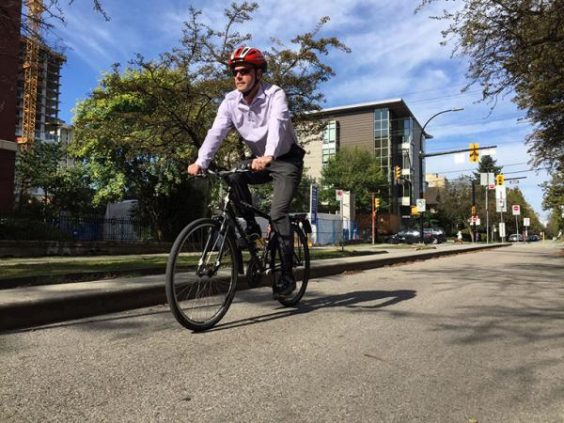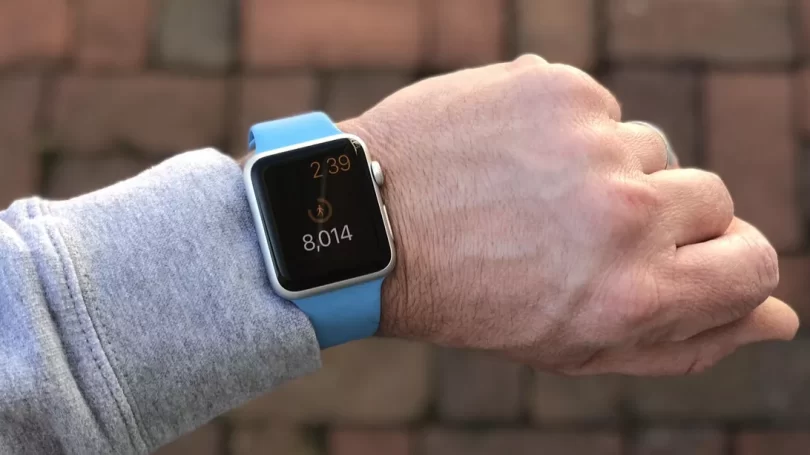October is Canada’s Healthy Workplace Month. Many of us are still working from home and eliminating commutes, which decreases our daily physical activity. Below are tips for incorporating more steps into your day, and find out the optimal number of steps/day you should be taking (spoiler: there is no magic number).
If you’re tired of pacing around your kitchen island in your pajamas, willing your pedometer to flip to 10,000 before you hit the sack, fear not. A recent JAMA study concludes that, in fact, you don’t need to get 10K steps to get many of the benefits from walking.
Researchers found that individuals taking at least 7,000 steps per day had an approximately 50- to 70-per-cent lower risk of early death when compared to those who averaged fewer than 7,000 daily steps in the experiment.
Exercise and the law of diminishing returns
Dr. Scott Lear, Pfizer/Heart and Stroke Foundation Chair in Cardiovascular Prevention Research at St. Paul’s Hospital and Professor, Faculty of Health Sciences, Simon Fraser University, agrees with the findings.

“The average person takes about 4000 to 5000 steps per day. So is it realistic to expect most people to double or triple their number of steps? Maybe, but it may not be achievable for everyone,” says Lear. “The greatest gains come from going from no, or little activity, to a bit more – like from walking zero minutes to five minutes, or from five minutes to 10 – and while benefits continue to add up with more activity, it’s a process of diminishing returns. For the average person, doing more won’t continue to provide a remarkable ROI.”
So you could do more, but you won’t continue to notice a lot more health gains.

What number of steps should we be aiming for?
It turns out that the number of 10,000 steps is arbitrary and was created as a marketing campaign in Japan leading up to the 1964 Tokyo Olympics. However, just because an idea wasn’t founded in science doesn’t mean it should be discarded.
“The thing I would encourage is for each person to figure out how much they’re active/exercising and aim for an increase,” says Lear. “If you start measuring your steps and realize you’re only at 2,000 steps a day, that’s a long way off from 10,000 so it would likely dissuade you rather than motivate you. But maybe you could think about a 50-per-cent increase, so to go from 2,000 to 3,000. It’s more manageable and will still make a big benefit to that person.”
And if you are someone who is already logging 10,000 steps or more in a day, there is zero need to decrease that number. That’s the benefit of wearing a pedometer: it counts every single step in your day so walking your kids to school in the morning, that walk to the coffee maker, the walk downstairs to the laundry room all count towards your daily total.
How do steps help our heart health?
“The main effect of any type of activity is not to the heart specifically, though the heart is a prime beneficiary,” says Lear. “When you’re walking, for example, you’re making the muscles more efficient at getting oxygen from the blood to keep the muscles working. When this happens your heart doesn’t have to work as fast or as strong”
Lear refers to exercise as the natural beta-blocker, which is a medication used to control heart rhythm, treat angina, and reduce high blood pressure.
“Someone on a beta-blocker will notice their resting heart rate goes down; one will also see that same outcome with exercise,” says Lear. “This is where most of the benefit to the heart comes from. Exercise can also lower blood sugar, blood pressure and improve one’s cholesterol profile, but lowering a person’s heart rate is the one of the bigger benefits that comes from exercise when it comes to reducing mortality and heart disease.
Are all steps created equal?
The short answer?
Yes.
“The value of the steps is that they’re easy to measure; walking is the most common activity we do, and most accessible in terms of its cost and where you can do it,’ says Lear. “When you’re wearing your pedometer it captures all steps that you take in a day, not just the ones that you’ve designated for exercise. So, while those steps might not necessarily all be at a moderate or vigorous pace, it is counting when you walk to the coffee shop for a latte, or walk up and down the stairs in your house.
So while it could be a challenge for someone to achieve 7,000 steps in one setting, with conscious effort, hitting your goal number of steps can certainly be achieved throughout a day. And that’s not to say that it’s only steps that count. Lear is quick to mention that incorporating other activities still “counts” in one’s desire to achieve their activity goals or see increased health benefits.
“The World Health Organization’s guidelines for being physically active states that one should accumulate 150 minutes a week of moderate to vigorous activity,” says Lear. “To break that down into something more manageable would be, say, going for a brisk walk for 30 minutes a day. At about 100 steps per minute (brisk walking pace), this would yield about 2000 to 3000 steps a day, so far less than 10,000 steps a day.”
Lear cautions that this is precisely the concern, or the downside, of only promoting steps.

“It can make someone think that they need to cram in both 10,000 steps and their daily lane swim,” says Lear. “The work is in trying to determine an activity’s equivalency. For me, this could mean cycling for 30-45 minutes and then aiming for 5,000 steps that day. Again, whatever an increase means for each individual person is what one should be striving for, not necessarily a magic number.”
Tips for stepping it up
Regardless of whether you’re aiming for 2,000 steps, 7,000 steps, 10,000 steps or an activity combo thereof, it can feel hard to get it all in some days.
Dr. Lear has the following tips and tricks for easy ways to increase your step counts:
- If counting steps is new to you, wear a pedometer for three days, calculate your daily average and see if you can increase that average by 10 to 20% every 2-3 weeks until you reach your goal.
- In current times of working remotely, I like to suggest that people take calls or sit-in on meetings when they go for a walk. If you’re meeting in-person, suggesting a walking meeting not only helps you get steps/exercise in, but is also COVID compliant. It’s a more expensive option but there are treadmill desks that could also help you to accomplish the same thing.
- Look for opportunities in your daily life:
- Take the stairs over the elevator
- If you’re taking public transit, try walking to the next stop than you would normally to get on the bus.
- Try taking one piece of laundry upstairs at a time.
- I always like the idea of doing multiple things at the same time, like walking to the store to get your groceries.
- Walk in place when watching TV commercials or waiting during the credits.
To read more about Dr. Lear’s work, and insights, you can find him here:
Blog: www.DrScottLear.com
Twitter: @DrScottLear
Instagram: DrScottLear
Website: www.CoHeart.ca





